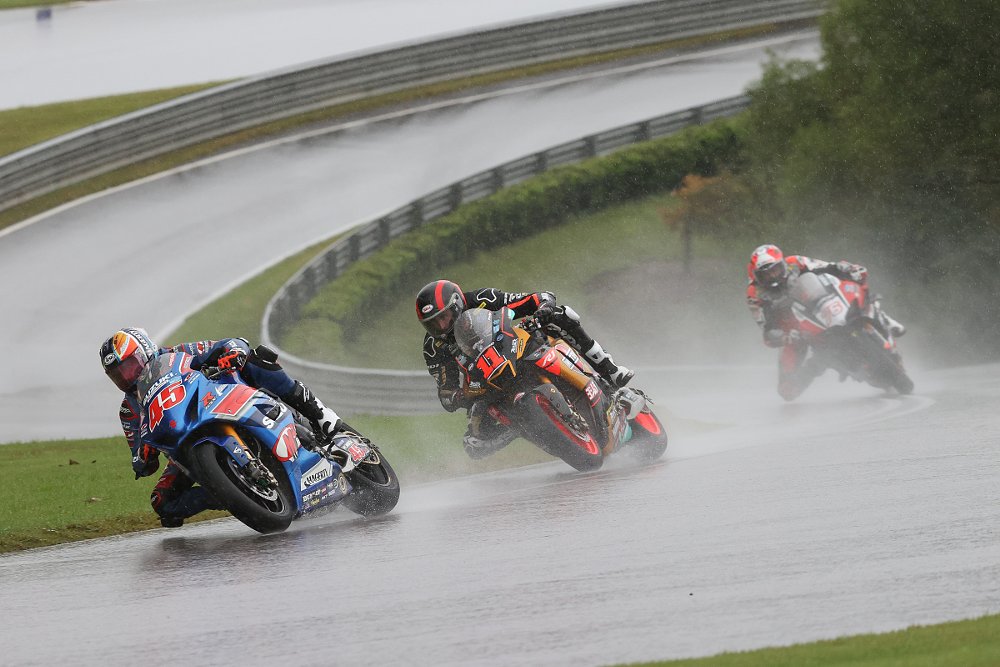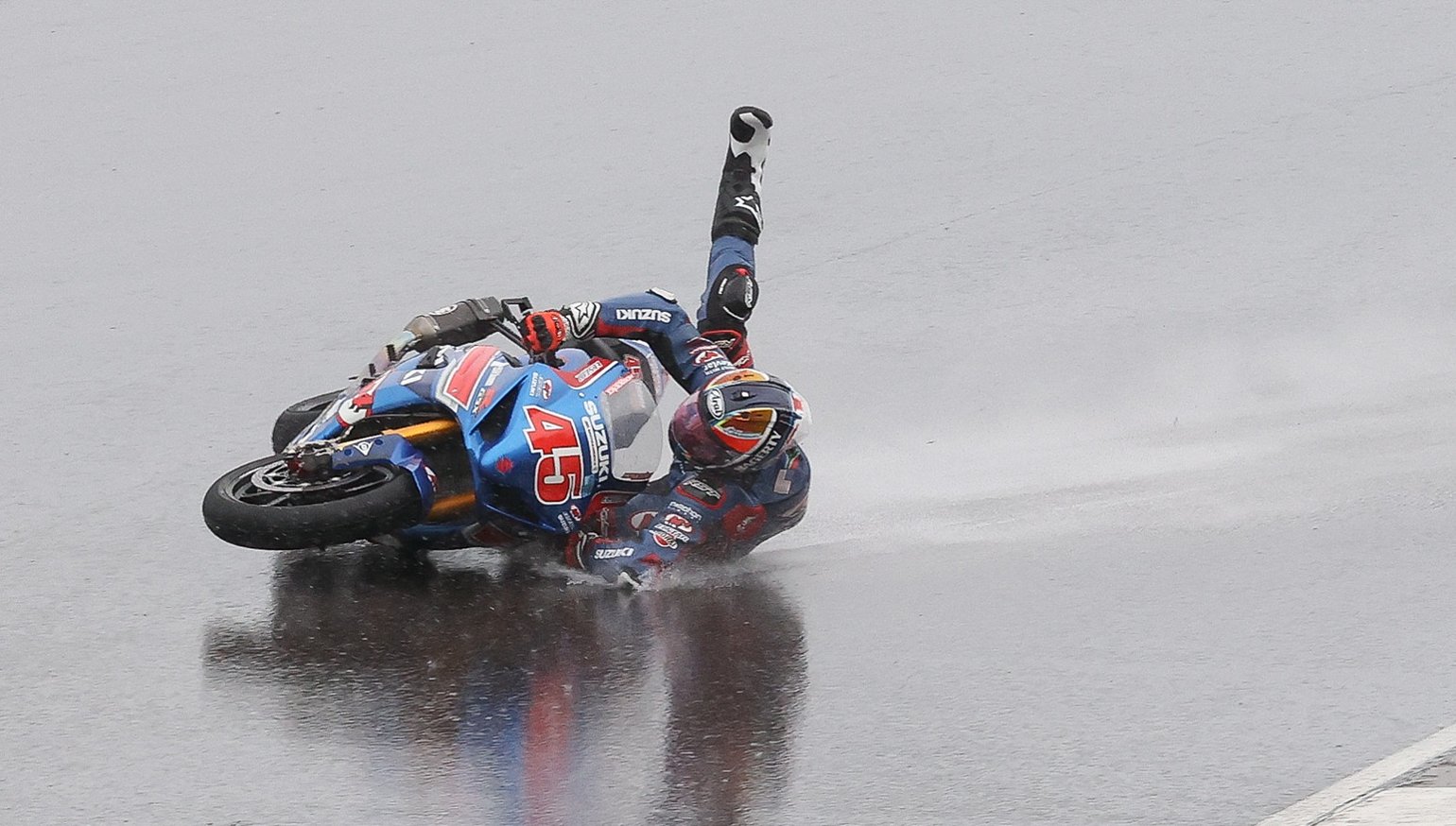Dear MotoAmerica: I've been a fan since the beginning, since 2015. Even before that, I was a fan of motorcycle roadracing, and all along the way I've been a keen observer of the sport, constantly looking to learn more.
To begin this letter, I want to say this: Keep doing what you're doing. I love that any number of riders and manufacturers have the ability to win Superbike and Supersport races on any given race weekend. I love that former MotoGP riders have come over to dice it up with the best the United States has to offer. These are all signs of a healthy and robust racing series; signs that were noticeably lacking prior to MotoAmerica's inaugural season. Keep it up!
Yet, as all of us who are forever searching for higher and better performance know, there's always room for improvement. Figuring out what to do in heavy rain situations is something I believe MotoAmerica can improve upon.
There have been several instances over the last five years in which racing in the rain was unacceptably risky and resulted in top riders getting injured. This is different from a rain race where traction is reduced but still relatively predictable, such as Superbike race one at Road Atlanta earlier this month. I enjoyed watching Cam Beaubier post a solid challenge to Jake Gagne's wet-race prowess in that race because the conditions meant it was rider skill on display, rather than a total gamble as to whether a rider would win it or bin it.
That hasn't always been the case. When conditions are such as they were at Barber Motorsports Park this year and four years ago, and at Road America in 2024, it impacts the value of MotoAmerica as a whole and that's a bad deal for everyone: riders, teams, fans, and MotoAmerica itself.

When top riders get injured, such as Cam Beaubier and Sean Dylan Kelly did last year at Road America, it makes the racing less competitive, which makes it less entertaining, which reduces the overall value of what MotoAmerica is selling. Crashing in unsafe rain conditions has left Cam Beaubier, Cam Petersen, Sean Dylan Kelly, Corey Alexander, and others with injuries that put them out of racing for one or more rounds, which can drastically affect the on-track battles we all love, not to mention the championship.
Furthermore, we should not forget that in other classes, like Junior Cup or Talent Cup, the riders are often children who are counting on the adults in charge to create and maintain a safe environment in which they can race. They're boys and girls, not grown men and women. I was more afraid for Junior Cup riders at Road America last year than I was for the Superbike guys. The two riders who crashed at Road America in the video below were 15 and 17 at the time.
The need for a comprehensive approach
I'm not saying MotoAmerica is doing nothing or doesn't care. By no means. I understand that MotoAmerica officials closely look at lap times during rainy sessions to help them understand if conditions are getting worse or better. I'm sure other factors are scrutinized by officials, as well. But these riders are professionals, so of course their lap times will come down with time on track in the rain. So, reduced lap times, in my opinion, is not a good criterion for determining whether to red-flag a race or cancel the race altogether.
It's not just me, a fan, saying that a more comprehensive approach is needed. It's being openly discussed among top riders themselves. On a recent episode of the Pipe Dreams podcast, Corey Alexander and James Rispoli talked about the conditions experienced this year at Barber.
"“I mean, I think there were certain points in time where the track was suitable to race," said Alexander. "But yeah, I mean, there's got to be some kind of benchmark for what the level is that is acceptable or not... I think if we had rolled out for the warmup lap and the warmup lap was more of like a five-minute or 10-minute sighting session just to kind of get our feedback, I think we would've all come in [to the pits] and said it's too much right now."
"The Twins Cup, you saw when it got to a certain point, just the tires can't take it," said Rispoli. "You can't disperse that amount of water. It's just too much."
"I went out when we were loading my bike up on the trailer, on the track," said Alexander. "I went out and just stood in one of the puddles and it was like over the toes of my boots."
"Yeah, you just can't. Nothing's going to save you doing 100 miles an hour going across that," said Rispoli.
The discussion went on to consider how veterans in the paddock, such as Ben Spies, Jason Pridmore, and Josh Hayes, could have some input about whether a race should go on during inclement weather. Also included in their discussion was the option for some sort of committee or riders union, essentially a representative body that could make decisions on behalf of all the riders and not make anyone feel like they're the odd man out.
"It's got to be a greater person or greater perspective that isn't relying just on racers to make their own decisions," said Alexander. "You shouldn't have to be in that position where you're deciding your own destiny in a situation where you're getting paid to, you know, perform."

The point when the show doesn't have to go on
Yes, everyone has a vested interest in letting the show go on, but in my opinion a more comprehensive approach to decision-making is best for the long-term health of the series. Here's a list of some things stakeholders can do in the spirit of such an approach.
Riders: If conditions are too risky, refuse to race. Pull into the pits after the warm up lap or even during a race. Again, these guys are professionals and have the experience to know when the odds of crashing are not in their favor. As Alexander stated, it's hard, because there's tremendous pressure on them to compete, but if a top rider refuses to race in a deluge, others might just follow, and that will get the attention of race control.
Fans: Be understanding of things outside of human control, and prioritize safety and long-term consequences before putting up a stink over a canceled race or two.
Aside from the safety of the riders (the most important consideration), as a spectator it's just miserable to get soaked while watching a race. I've attended MotoAmerica races at Road America and New Jersey Motorsports Park for rainy (but safe) races and even then, while wearing a Gore-Tex jacket and pants, I was uncomfortable and really not enjoying myself. A canceled race isn't the worst thing in the world. At least I can go find some place dry and tuck in to a warm bowl of soup without feeling like I'm missing anything.
MotoAmerica: Figure out a way an objective way to determine when a wet race is too risky. The data are there to collect and assess: rainfall per hour, G-forces experienced by riders (or bikes), number of corners with standing water, drying rate of wet tarmac, etc. Use the data to create an algorithm to determine a go/no-go decision, for example. If you must cancel a race, figure out a way to make it up to spectators that's fair (refunds, free tickets to a future round, etc.), and stick to your guns if there are complaints.
The price may be steep initially, but American roadracing is still in a precarious place, and long-term health of the sport must take precedence.

 Membership
Membership




